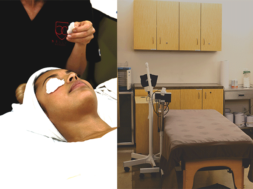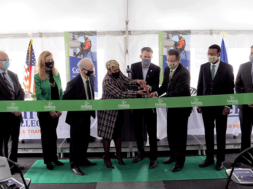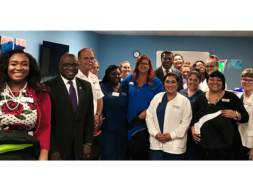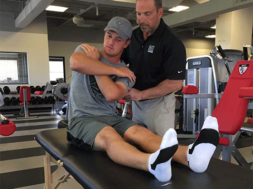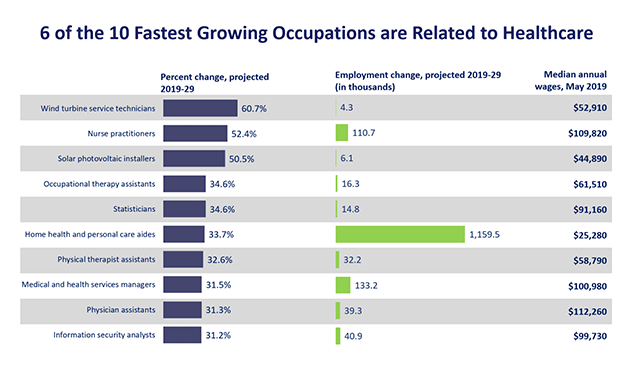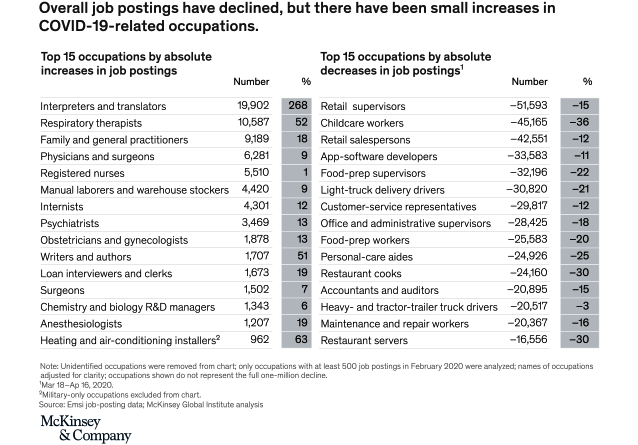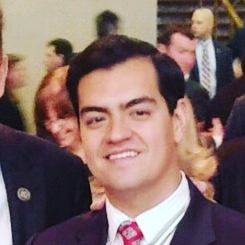
By Robert Keiser, Executive Director, Southeastern College and Southeastern Institute
The COVID-19 impact cannot be understated. COVID-19’s immediate impact on postsecondary education has been dramatic. Colleges and universities have scrambled to move classes remotely, to secure and desterilize their campuses, to accommodate faculty and staff with personal difficulties, and in some cases deal with declining enrollment. Perhaps, the greatest lesson of COVID-19 is flexibility is paramount and institutions that survive and thrive are those who are most able to adapt. As colleges and universities plan their future, they are considering today’s pandemic and the uncertainty of whether COVID-19 will have a long-standing impact.
The paradigm of immediate versus long-standing impact must be considered in the context of program additions and program teach-outs.
Simply put, what programs are going to be most attractive to students today due to the impact of COVID-19 on society, what programs will be attractive in the future due to the impact of COVID, and what programs are expected to have a short-term increase in popularity but do not have the staying power long-term?
Prior to COVID-19, the Bureau of Labor Statistics conducted their typical projections related to the fastest growing occupations. According to the Bureau of Labor Statistics six of the top ten fastest growing career fields for the years 2019-2029 were expected to be in the medical field.1 These occupations are nurse practitioners, occupational therapy assistants, home health and personal care aids, physical therapist assistants, medical and health services mangers and physician assistants.
When expanded to the top 20 fastest growing career fields, 12 of the 20 fastest growing occupations are in the medical industry.2 Within the top 20 are fields such as physical therapy assistants, genetic counselors, phlebotomists, physical therapist aides, health specialty teachers in postsecondary education and medical assistants.2 Postsecondary leaders can be bullish about the current and future demand for these medical programs as COVID-19 has only increased awareness and demand for allied health fields. Inside Higher Ed called the increasing need for health care individuals “higher education’s historic opportunity.” George Haddad wrote, “the sector can and must respond to the pandemic era’s distinct needs by educating and training more students in the health professions.”3 Slogans touted by institutions in and outside of postsecondary education such as “health care heroes” glorify the allied health industry and only further increase the demand for programs in the industry. McKinsey and Company identified allied health occupations in which job postings increased and decreased during the early stages of the pandemic.4
Nine of the top 15 occupations were in the medical field. These occupations included respiratory therapists, family and general practitioners, physicians and surgeons, registered nurses, internists psychiatrists, obstetricians and gynecologists, surgeons, and anesthesiologists. It is important to note, that outside of what is considered traditional health field occupations most experts believe that occupations supporting mental health, such as psychiatric technicians and aids, substance abuse, behavioral disorder, and mental health counselors, will increase due to the stress of COVID-19.
Outside of health-related programs, it is expected that demand will increase for computer and mathematical occupations. These occupations account for 6 of the 20 fastest growing occupations according to the BLS.5 Increasing use of mobile and connected devices will drive demand for application software developers, which is projected to experience employment growth of 25.6 percent by 2028.5 The need for robust online security will also rise as more connected devices enter homes and workplaces. According to the BLS, this increased need for cybersecurity will drive demand for information security analysts, employment of which is projected to grow by 31.6 percent by 2028.5
Long-term health care and technology-based professions should continue to grow in demand and thus programs that support these industries. As the baby-boomer generation continues to age health care will be needed in greater quantity, the pandemic will leave lasting health care concerns in the minds of regulators and citizens, and mental health will continue to grow in prominence as a mainstream industry. As Americans utilize remote technology more often during the COVID-19 period American habits and preferences will change. Automation is likely to occur at a greater rate and Americans due to the recent experience will not only demand more technology but will become increasingly more comfortable with its use. Therefore, it is expected that technology-based programs will continue to grow in demand.
There are programs and occupations outside of the medical and technological industries that I am also excited about. HVAC should continue to be a strong program and increase in demand.
The BLS gave the occupation a “much faster than average” growth projection and McKinsey and Company’s data demonstrates that HVAC installers continued to be hired in bulk during the pandemic.6,7
In a parallel analysis, I am also bullish on the future of other short-term programs related to plumbing and electrical trades. These occupations, like HVAC, are tied to residential and commercial construction and with low-interest rates they should continue to grow. Furthermore, plumbing and electrical trades much like HVAC were projected to have at least “faster than average” occupational growth prior to the pandemic and have shown consistency during the pandemic.8,9
Cannabis-related studies, although some may consider this a medical program, is another program outside of traditional medical and technology industries that I am very excited about. According to Forbes, the cannabis industry is to outpace new jobs in manufacturing and create more than a quarter of a million jobs by the end of this year.10 This industry and its future outlook will be largely contingent upon the easing of federal and state regulation. I do believe however more states will adopt more lenient policies when it comes to cannabis as politicians on both sides are starting to come around to either the potential economic, tax or medical benefits that the industry can provide.
The industries and programs to avoid during the COVID-19 period are hospitality and tourism, entertainment, culinary, and any occupation that can be easily automated. COVID-19 has suspended the desire and ability to travel and to interact socially and has also contracted a family’s discretionary income which has greatly impacted hospitality, tourism, culinary, and entertainment industries. Data manifests the earliest wave of job losses, in mid-March, disproportionately hit food service, entertainment, accommodations and leisure and hospitality industries were hit the hardest.
McKinsey and Company found “significant overlap between the workers who are vulnerable in the current downturn and those who hold jobs susceptible to automation in the future.4 In addition to the effects of technology, the crisis itself may create lasting changes in consumer behavior and health protocols. To put vulnerable workers on more promising and sustainable paths, the U.S. response should incorporate a longer-term view about the resulting occupational shifts and the development of skills.”4 Thus, it is possible that companies have used COVID-19 as an opportunity to fast track their automation plans and it is likely that consumer preferences and habits will change due to the increased interaction and use of technology during the COVID-19 period.
It is expected that long-term, hospitality and tourism will make a rebound, but what is unknown is the extent of the rebound.
It can be assumed that people will travel and stay in hotels again, but will it be at the same rates as pre-COVID? The same questions can be asked about the entertainment industry. Furthermore, the increased use of technology and business’ reliance on technology will only speed up the demand for automation in this country. I am most pessimistic about the long-term outlook of manual occupations that were threatened by automation pre-COVID-19 and programs that support these occupations. Whatever the true outlook of these declining industries is, it is evident that these industries and the programs supporting these industries will take significant time to rebound as the fear and psychological impact of COVID-19 is likely to outlive the medical threat of COVID-19.
My institution offers a hospitality program and we are currently assessing the program’s long-term viability. It may be wise for school operators to do the same. School operators should first consult members of the professional community which support the program and who work in the industry to get their insight about the potential of an industry rebound. If concerns are wide-spread about the lack of a return to normalcy teach-outs or program modifications should be considered
As a word of caution, postsecondary administrators must continue to use discretion when selecting their programs as the long-term projections for programs within industries can vary significantly. Additionally, pandemic performance is not always going to be an indicator of long-term program performance and employment. For instance, respiratory therapy has become a very sought-after program and occupation due to the medical complications associated with COVID-19. However, will this trend continue in a post-pandemic world as respiratory therapists prior to COVID-19 was marked by the BLS as the second fastest declining occupation?11 In a similar vein, many experts will point to a technological renaissance due to COVID-19. I too believe that the technology industry will boom and become even more influential in our lives due to COVID-19, but school operators must be careful to pick the winning programs as there is such a wide range of occupations in the technology field. A haphazard approach could result in program additions that long-term may not be successful. An example of an occupation that on its surface may seem to do well post-pandemic but a closer look shows an occupation in continuous decline is computer programming. Computer programming was rated by the BLS as one of the fastest declining occupations pre-pandemic.12
References
- https://www.bls.gov/emp/graphics/2019/5-of-the-10-fastest-growing-occupations.htm
- https://www.bls.gov/ooh/mobile/fastest-growing.htm
- https://insidehighered.com/views/2020/06/25/colleges-can-and-should-educate-more-students-health-professions-opinion
- https://www.mckinsey.com/industries/public-and-social-sector/our-insights/covid-19-and-jobs-monitoring-the-us-impact-on-people-and-places
- https://www.bls.gov/ooh/mobile/fastest-growing.htm
- https://www.mckinsey.com/industries/public-and-social-sector/our-insights/covid-19-and-jobs-monitoring-the-us-impact-on-people-and-places
- https://www.bls.gov/ooh/Installation-Maintenance-and-Repair/Heating-air-conditioning-and-refrigeration-mechanics-and-installers.htm
- https://www.bls.gov/ooh/construction-and-extraction/electricians.htm
- https://www.bls.gov/ooh/construction-and-extraction/plumbers-pipefitters-and-steamfitters.htm
- https://www.forbes.com/sites/debraborchardt/2017/02/22/marijuana-industry-projected-to-create-more-jobs-than-manufacturing-by-2020/#77348adb3fa9
- https://www.bls.gov/emp/tables/fastest-declining-occupations.htm
- https://www.bls.gov/emp/tables/occupations-largest-job-declines.htm
ROBERT KEISER raised in Fort Lauderdale, Florida, has lived in Washington D.C. and Barcelona, Spain but now resides full-time in Delray Beach, Florida. Robert holds a Bachelor’s of Science as well as a Master of Business Administration (MBA) from The George Washington University in Washington D.C. Robert is also currently pursuing a Ph.D. in Higher Education Leadership from Capella University.
Robert Keiser currently serves as the Executive Director of Southeastern College and Southeastern Institute and was previously the Campus President of Southeastern College’s West Palm Beach Campus. Robert Keiser previously worked at Keiser University’s Fort Lauderdale, West Palm Beach, and Port St. Lucie campus. During his experience with Keiser and Southeastern, Robert has worked in admissions, financial aid, academics, and governmental relations. Robert serves as the President-Elect for the Florida Association of Postsecondary Schools and Colleges and as a member of the Rules and Accreditation Committees for the Commission of Independent Education. Prior to his time in Higher Education, he worked for U.B.S Financial Services in wealth management and Skanska USA, construction management, in business development.
Contact Information: Robert M. Keiser, M.B.A. // Executive Director // Southeastern College/Southeastern Institute // 954-261-5135 // rkeiser@sec.edu // www.sec.edu; http://www.southeasterninstitute.edu

